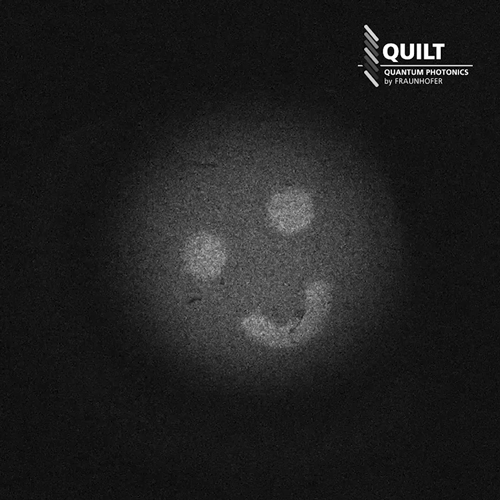Quantum imaging system of Fraunhofer IOF delivers first promising video
Quantum revolution in medical imaging announces
Scientists at the Fraunhofer Institute for Applied Optics and Precision Engineering IOF have taken their first images using a novel quantum imaging technology. Using a so-called "single crystal set up", the scientists were able to generate quantum images and videos. This technology is particularly relevant for the field of life sciences, since it allows to image tissue with particularly high contrast and information, while at the same time maintaining a low illumination dose.

When medical research examines cell cultures or tissue under the microscope, they irradiate it. The disadvantage, however, is that for every examination the visible light transfers a certain energy dose. The light interacts with the tissue under examination, and even though this interaction may be small it might still change or permanently damage sensitive tissue. Scientists at the Fraunhofer Institute for Applied Optics and Precision Engineering IOF have now developed a way to apply quantum technologies to this problem. Quantum imaging makes it possible to detect for example proteins in tissue gently and with high contrast. This way, it becomes extremely relevant particularly for the field of life sciences.
Group leader Dr. Markus Gräfe points out: "Especially in the field of biological studies, the measurement duration is often limited by the property of phototoxicity, which describes the sensitivity of samples to the destructive influence of light. This strongly limits the spectrum of processes that are accessible for research. It is impossible or at least very difficult to observe cell processes that last for several minutes, let alone hours. Quantum technology can help us here, especially in the interesting UV spectral range". The scientific set-up of this technology is based on a novel single crystal concept, initially in the visible (VIS) or near infrared (NIR) spectral range. The innovation compared to conventional optical imaging techniques is the fact that the light reaching the camera and thus producing the image has never interacted with the object.
This works due to entangled photon pairs, as Gräfe explains: "Through targeted illumination of a special crystal, we can use the surprising effects of quantum mechanics. Preserving energy conservation, we create entangled photon pairs from the quantum vacuum and single photons, in which we can precisely control the wavelength of either one of them by changing the orientation and temperature of the crystal. The specific interferometer set-up allows us to read information of one photon through its partner photon. The interacting photon is never brought to the camera, but still an image is created". An experimental set-up that is particularly compact and stable allows very short exposure times up to video rate. Since the images make both ultraviolet (UV) and the infrared (IR) range efficiently detectable in the intermediate visual (VIS) range, they are not only relevant for life sciences but also for material science. In the next step, application will be demonstrated in the UV range. Currently, scientists are investigating how far apart the wavelengths of the entangled photons can be. The results have been reached within the framework of the Fraunhofer light-house project QUILT. A significant contribution to the results was made through preliminary studies at the Institute for Quantum Optics and Quantum Information (IQOQI) in Vienna, which are currently developed further at Fraunhofer IOF